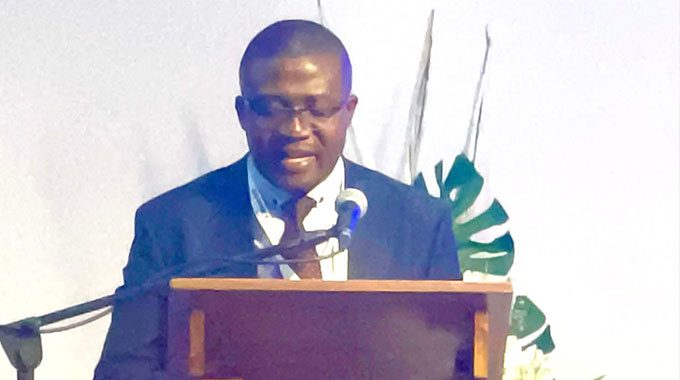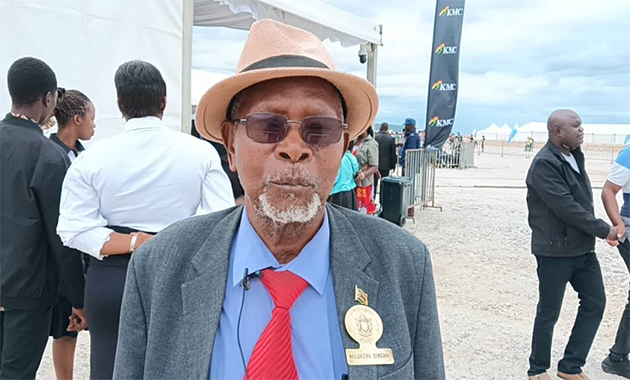Tackling the housing crisis the Hydraform way
Prosper Ndlovu Business Editor
OWNING a house is one special achievement in life, desired by many yet remains elusive because of high costs of either buying or building one. The housing backlog for local authorities across the country and the sprouting of illegal urban settlements testify to this sad reality.
Many developing countries battling the challenge of housing and unemployment are increasingly adopting the Hydraform value proposition, which uses interlocking soil cement blocks with limited use of mortar.
Jochen Kafahl, who fathered this technology in 1983 after being retrenched by a large engineering firm that closed its offices in South Africa, says Hydraform building systems substantially reduce building costs and could be used by an average person without specialised skills.
Given the desperate need for housing and increasing lack of funding for infrastructure spending in Zimbabwe, Hydraform technology could be a long term panacea, Astra Building Centre managing director Jabulani Nkomo said.
Astra is the first company in the country to champion the use of Hydraform technology.
As drivers of housing development, central government and local authorities should take the lead in embracing Hydraform as a tool for bridging the infrastructure gap and developing communities, he added.
“We’ve been running this innovative project for the past six years. It has proved to be a versatile and simple technology whose product is good.
“However, the uptake is slow, perhaps because of the economic slowdown in the country. We feel the government and councils should embrace Hydraform as it offers opportunity for low cost structures compared to conventional buildings,” said Nkomo.
Experts say the technology is cost effective in that 75 percent of its structures do not need cement hence it is quick to build.
One Hydraform brick is equivalent to three conventional standard bricks, said Nkomo, adding the technology was also environmentally friendly as it removes the need to cut trees or use coal to burn bricks.
He also said Hydraform brick-making machines were versatile as they could be moved anywhere where a building project is being done as opposed to transporting finished bricks.
Under Zim-Asset, Zimbabwe’s five-year (2013-18) economic blue-print, the government set a housing delivery target of 125,000 units or serviced stands by December 2018 with average 25,000 units per year.
In August this year the government reported that only 17,000 units had been delivered countrywide while the national backlog stands at about 1, 250,000.
Using Hydraform technology, Astra has supplied bricks for the construction of teachers cottages at Landa J High School in Tsholotsho, a structure at Lupane State University, a perimeter wall at Mpilo Central Hospital, teachers’ cottages in Pumula funded by World Vision, a house at Barham Green suburb in Bulawayo, a demo house in Emganwini.
The Mpilo project is a community initiative spearheaded by the Bulawayo United Residents Association (Bura).
“We chose Hydraform bricks because the technology saves a lot in terms of cement. The bricks are very durable with one brick weighing about 12kg, which makes a strong structure as it is almost a double wall,” Bura chairman Winos Dube said.
“The price is also affordable. For instance we bought each brick at $0,60 cents. This is the technology we feel our people can use to even build houses. Our project is on-going and we can encourage our people in Zimbabwe to embrace this technology when building schools and other public facilities.”
Nkomo said his company was presently contributing to building a clinic in Tsholotsho and demo-houses for Zimplats in Ngezi.
“We believe the project (Hydraform) is moving in the right direction but the liquidity problem is pulling us down. Our view is that central government, councils and non-governmental organisations must play a leading role in embracing this technology,” said Nkomo.
He said Astra Building Centre was open for partnerships in championing rural development mainly in resettlement areas as well as housing development in urban areas, which could ease the housing backlog.
“Hydraform technology could play a bigger role in the infrastructure and utilities cluster of Zim-Asset. As Astra we believe we’ve a role in this. As a leading distributor of Hydraform products in the country we can assist the government and councils in procurement of Hydraform machines for brick making as well as training people on how to use them,” said Nkomo.
He said the technology could be used as an empowerment instrument among the unemployed youths across the country who could form building brigades, own the machine and conduct building projects in their areas.
“Our people need skills to participate in community development and training on this technology could be one of those avenues. Our vocational training centres could also imbibe this skill for the benefit of the country,” he added.
South Africa-based Hydraform Group managing director Robert Plattner, says innovation and team work is the cornerstone of the new building system, whose materials are found on the site where housing is required.
“Since no special skill is required to use the system, it’s easy for the unemployed and unskilled to learn to use. And once learnt, and as long as the machinery remains available, it can provide a steady source of income in regions where paying jobs are scarce,” said Plattner.
He said in Nairobi, Kenya, local construction companies were taking advantage of the cost effective Hydraform building system to build upmarket commercial houses like flats.
Nkomo, who attended a recent conference on Hydraform in South Africa, said 50 out of 54 countries in Africa have adopted the technology.
“It was a highly subscribed meeting. I had the opportunity to discuss with government officials from Uganda who said their country was involved in building schools, hospitals and clinics using Hydraform and they had good success stories to tell.
“I feel we can as well do a lot as a country using this concept. I’ll be meeting Ministers of Youth (Patrick Zhuwao) and his Local Government and Public Works counterpart (Saviour Kasukuwere), to share this insight with them vis a vis government’s promises on housing,” he said.
Nkomo said while the conference was meant to review progress in Hydraform progress, Zimbabwe was found wanting when compared to countries such as Uganda, DRC and South Africa.
“The meeting was an eye opener for Astra and the opportunities in this technology are huge. Technical, tertiary and financial institutions can also come on board to assist in training programmes.
“This technology has been proven worldwide and we don’t need foreign firms in doing some of these things. Local authorities can own these machines too,” he said.
“We’ll be organising a stakeholder workshop on this concept early next year where the government, councils and NGOs would participate.”









Comments